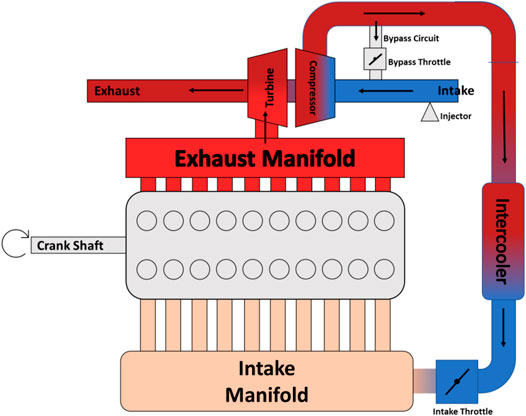

Fast opening and closing of the exhaust valves required shorter blowdown duration and longer scavenging duration. Both methods improved BSFC in the same order even though they were different in nature. increasing the diameters of the blowdown and scavenging valves by 4 mm and modifying the valve lift curves of the exhaust valves to fast opening and closing. Two methods were used to enlarge the effective flow area i.e. Therefore, the effects of enlarged effective flow areas of the exhaust valves were studied. This is mainly due to long duration of choked flow in the exhaust valves because this approach is using only one of the two exhaust valves on each cylinder at a time. To decouple the blowdown phase from the scavenging phase, the exhaust flow was divided between two different exhaust manifolds with different valve timing.Īccording to this study, this combination improves the fuel consumption in low engine speeds and deteriorates it at high engine speeds. The aim of this study was to utilise the earlier phase (blowdown) of the exhaust stroke in the turbine(s) and let the later phase (scavenging) of the exhaust stroke bypass the turbine(s). To decrease the influence of the increased exhaust back-pressure of a turbocompound engine, a new architecture was developed by combining the turbocompound engine with DEP. The results of this study indicate that turbocompound engine efficiency is relatively insensitive to the air-fuel equivalence ratio. In addition to exhaust back-pressure, turbine speed and turbine efficiency, the role of the air-fuel equivalence ratio was demonstrated in details, because lower air-fuel equivalence ratio in a Diesel engine can provide higher exhaust gas temperature. In the study of exhaust heat utilisation, important parameters concerning turbine and gas exchange system that can influence the waste heat recovery were discussed. The present study shows that the heat transfer in the turbochargers is very crucial to take into account in the engine simulations, especially in transient operations. Finally, the temperatures of turbocharger’s surfaces were predicted according to the measurements under different heat transfer conditions and their effects are studied on the turbocharger performance. Then, two different turbocharger performance maps were assessed concerning the heat transfer conditions in the engine simulation. Next, the heat transfer modelling of the turbochargers was improved by introducing a new method for convection heat transfer calculation with the support of on-engine turbocharger measurements under different heat transfer conditions. In the study of heat transfer in turbochargers, the turbocharged engine simulation was improved by including heat transfer of the turbocharger in the simulation. Secondly, different concepts have been examined to extract exhaust heat energy including turbocompounding and divided exhaust period (DEP) with the aim of improved exhaust heat utilisation and reduced pumping losses.

First of all, the importance of heat losses in turbochargers has been shown theoretically and experimentally with the aim of including heat transfer of the turbochargers in engine simulations.

This is in addition to the heat losses in the turbochargers what makes any measurement and simulation of the engines more complex. The exhaust gas pressure is the principal parameter which is required for the turbine energy recovery, but higher exhaust back-pressures on the engines create higher pumping losses. The energy recovery depends on the efficiency and mass flow of the turbine(s) as well as the exhaust gas state and properties such as pressure, temperature and specific heat capacity. Turbocharger and turbocompound can, however, recover part of this wasted heat. A large portion of fuel energy is wasted through the exhaust of internal combustion engines. 2014 (English) Doctoral thesis, comprehensive summary (Other academic) Abstract Įxhaust gas energy recovery should be considered in improving fuel economy of internal combustion engines.


 0 kommentar(er)
0 kommentar(er)
